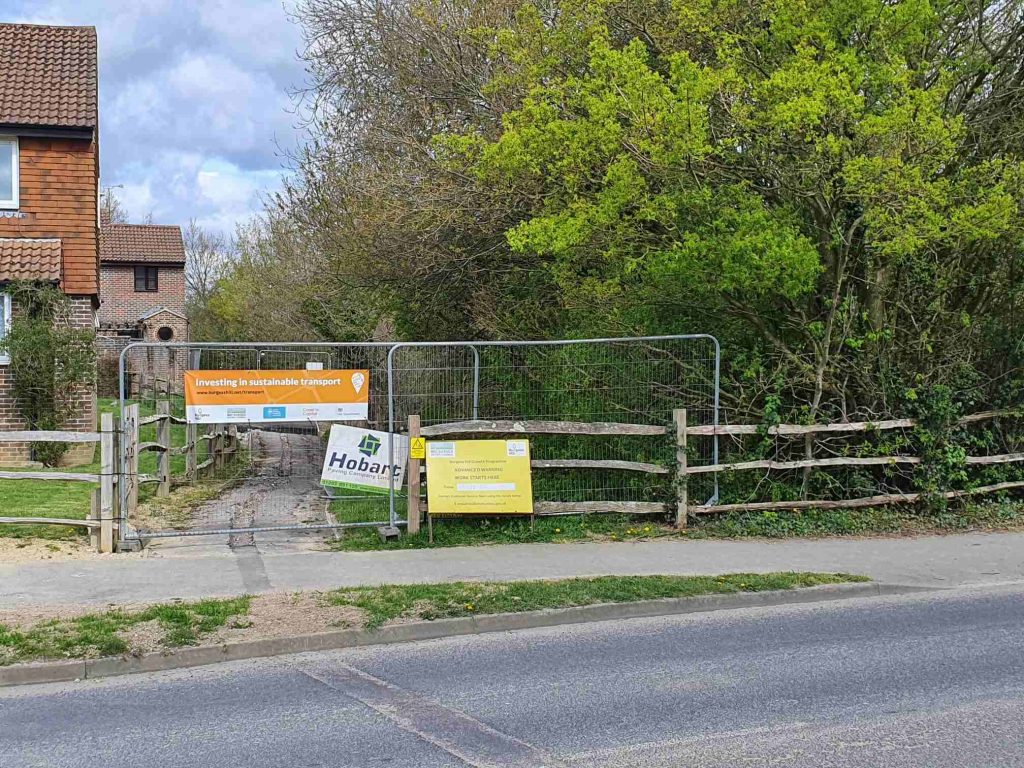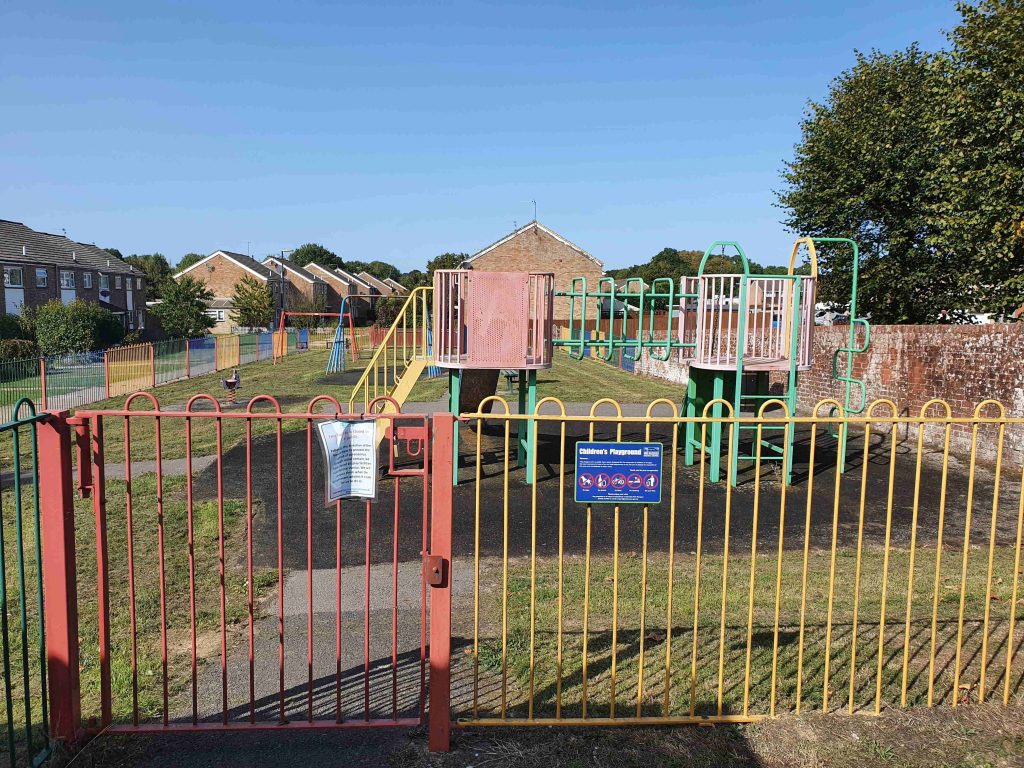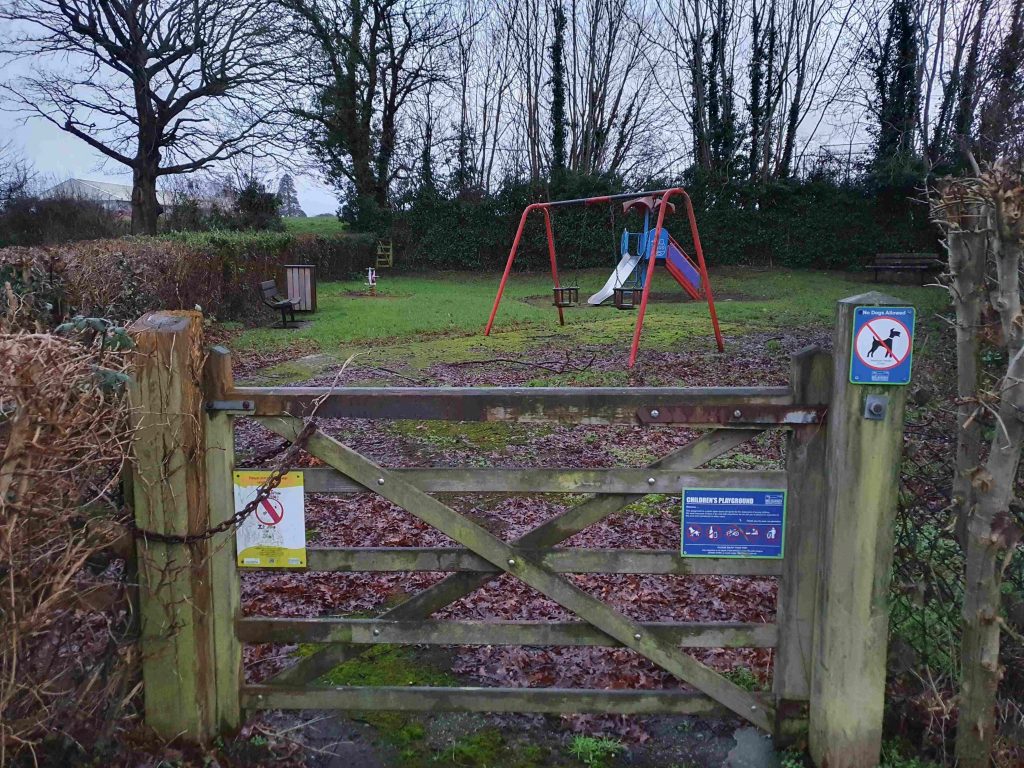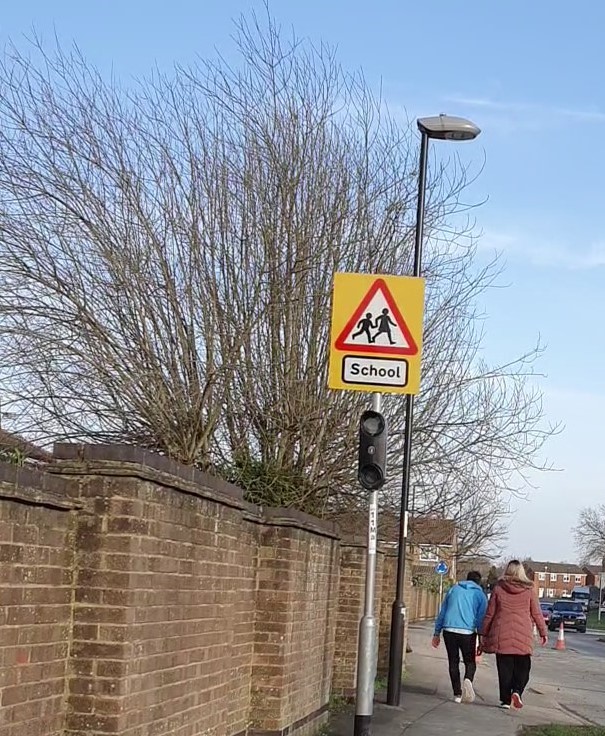I have been asked how long the roadworks in Leylands Road near St Peters Road will continue, and can confirm they will complete by the 16th April, a colleague who contacted them has confirmed they have completed the main works and will make good the road surface next week. I’ve also been asked about the blockage on the upgraded footpath parallel to Blackstone Way, and understand completion was delayed by legal issues which have now been resolved and therefore the work should be completed soon, just waiting for a specific deadline.
All play areas are back open but did they have to close at all?
It’s excellent news to hear that all our playgrounds are reopening but why did Mid Sussex District Council interpret government guidelines so differently to their colleagues in Horsham? Does cleaning playgrounds once a week really make them Covid secure? Did they need to be kept shut in the first place, and was £44,000 wasted on extra cleaning costs?
Freedom of Information requests submitted to Mid Sussex District Council and Horsham District Council have revealed two starkly different approaches to ensuring children’s playgrounds were ‘covid secure’ when Government advice allowed them to be reopened following the end of the first lockdown in July 2020.
Horsham District Council reopened all fifty-two of its play areas last summer, spent no money on additional cleaning, and just £100 on signage.a Other councils have taken a similar approach.
Mid Sussex District Council decided upon a very different course of action. In the response to the Freedom of Information request they say, “We undertook an initial cleanse prior to opening each facility in July 2020, and since then have carried out a weekly cleanse of all play areas and outdoor gyms that have re-opened. In addition, we have purchased and installed permanent A3-sized signage at each entrance point, providing guidance on social distancing, hand hygiene and the safe use of the facilities.”b The cost of this up to the week commencing 25 January 2021 was £44,152. When asked how those costs were arrived at, Mid Sussex District Council responded, “The costs were obtained from the Council’s existing cleansing contractor, so were based on a commercial assessment of the operational requirements associated with a weekly deep clean.” b
However, Mid Sussex District Council only opened 57 of its 123 play areas last summer despite Liberal Democrats raising concerns about the impact of keeping so many closed, and stated on its website that it would be too expensive to open them all stating that it would cost more than £220,000 a year to clean them regularly to ensure that they are COVID safe. A weekly cleaning regime was not required, as demonstrated by the approach of Horsham District Council and other local authorities. In addition there is no evidence that this is more effective in reducing coronavirus transmission than no cleaning regime given the number of people who would use the playgrounds between cleans.
Play Charity, Play England wrote to all local authorities in England in January 2021 asked that all playgrounds remain open “to reduce the catastrophic impact of COVID and lockdown on children’s physical and mental health and wellbeing”.c Their letter also highlighted the impact of playground closures on the most disadvantaged children – those with limited space at home, no access to a garden or disabled children – to which access to these playgrounds are “often a lifeline”. Mid Sussex District Council failed to carry out an equality impact assessment to understand the impact of their decision to close play areas on the children in our community.
Residents in Burgess Hill have been especially hard hit by Mid Sussex District Council’s decision to keep over half of its playgrounds closed. When the location of the closed playgrounds is plotted on to a mapd, it is clear that the playgrounds in Burgess Hill were much more likely to be kept shut with 79% shut in Burgess Hill, 50% shut Haywards Heath, 36% shut in East Grinstead and 19% shut in the outlying villages.
A sustainable economic growth strategy?
Tonight ’s scrutiny meeting focused on Mid Sussex District Council’s sustainability strategy or rather the sustainable economic strategy, as it wishes to merge economic strategy with its sustainability strategy. It will be challenging to ensure that economic issues do not dominate – I still have my doubts about combining these targets given the different and sometimes conflicting aims – the details now need to be gone through by a working party.
I was pleased to see the Council take on my suggestion of getting environmental issues explicitly considered when the council makes a formal decision, in terms of a section on any relevant report to outline environmental considerations. However, the existing Council policy of carbon neutral by 2050 is somewhat unambitious, particularly as West Sussex County Council has committed to being carbon neutral by 2030, and my original attempt to get a similar commitment from the District Council in 2019 was not supported by the Conservative administration.
The Coronavirus has had an impact across all council services including recycling and I highlighted the Council’s current performance on the percentage of domestic waste going to recycling, this has fallen back slightly to 42% when comparing with the target in its strategy of 50% by 2020 and a national average of 45%. More time spent at home and charity shop closures have perhaps meant more rubbish being generated. However, the Council has languished at near this rate for several years so further work needs to be done to promote reuse and recycling.
That is not to deny that positives such as the small electrical waste collection on the same day as the refuse collection, and the possibility of an expansion to include textile recycling would be a good addition, as well as a separate food waste collection, which was timetabled for a pilot to begin last year, but delayed due to the pandemic. However, there may also be painful decisions to reduce the frequency of refuse collections if the council is to find savings to finance the current gap in its income, although these have not been muted yet.
Unfair Council Tax needs reform
Mid Sussex District Council tonight agreed a budget which means total council tax for the average band D tax payer is increasing by 4.9% or £92, and is now over £2,000 for some parishes in Mid Sussex! However most of this is levied by the County Council and Police Authority and the element for Liberal Democrat controlled Burgess Hill Town Council did not increase at all.
Whilst I support the District Council precept this year as Covid has put big holes in the budget, particularly relating to the cost of our leisure centres, where it agreed to use £500,000 from reserves to pay towards a shortfall in running costs, the Council’s share comprises just 9% of the total precept, but the total cost levied by all authorities is equivalent to a third of what the average employed person living in Mid Sussex pays in income tax.
I put forward an amendment to highlight the gross unfairness of Council Tax and the need for reform, and to urge the leader of the Council to write to the government making the case for reform.
Unfortunately the Conservatives voted against it despite their national so called levelling up agenda and it was defeated.
Low earners pay a much greater proportion of their income as council tax which can often be more than they pay in income tax yet not necessarily qualify for any discount – although you should always check your entitlement for council tax benefit if you are on low income or for the various discounts that exist. It is also possible to request payment over 12 months rather than the standard 10
Council tax bands in England are still based on property values in 1991 –30 years ago. Since then the average house price in the South East has risen by over five times. The most valuable property (band H) attracts just three times as much tax as the least valuable, despite being worth at least eight times as much. Because there is no further increment after H, a person in a £600,000 house pays the same as a person in a £5 million house.
There are growing disparities between those who have maintained their incomes during lockdown, and those less fortunate who have suffered financially or are in the squeezed middle or “not quite poor” who don’t qualify for any benefit. It is younger people, those who are just starting out that it hits the hardest, paying a much greater proportion of their income.
The unfairness will only continue to get worse as time elapses, solutions such as revaluation, adding more tiers at the higher end or replacing with a more progressive tax system are all viable options. Yet for Mid Sussex Conservatives their main objection to the proposal was encapsulated by Cllr Webster – “on the clear basis of fairness I can’t support this at all”!
All Mid Sussex play areas to reopen
Following Liberal Democrat pressure to ensure all play areas were reopened, I am pleased the Council has now announced it will be reopening all playgrounds from 29 March. In the light of the government announcing its roadmap out of lockdown the Council has now committed to reopening all play areas, outdoor gyms, skate parks and ball courts from this date. Further they plan to reopen the Council’s three leisure centres- initially for individual exercise (including gym and swimming) from 12 April, before phasing in group exercise in line with the government’s roadmap. The Council had previously claimed it would cost £212,000 to provide additional cleaning resources to enable them to open all play areas in order to justify their previous decision to only keep half open during the lockdown.
New pathway means no more wet feet!
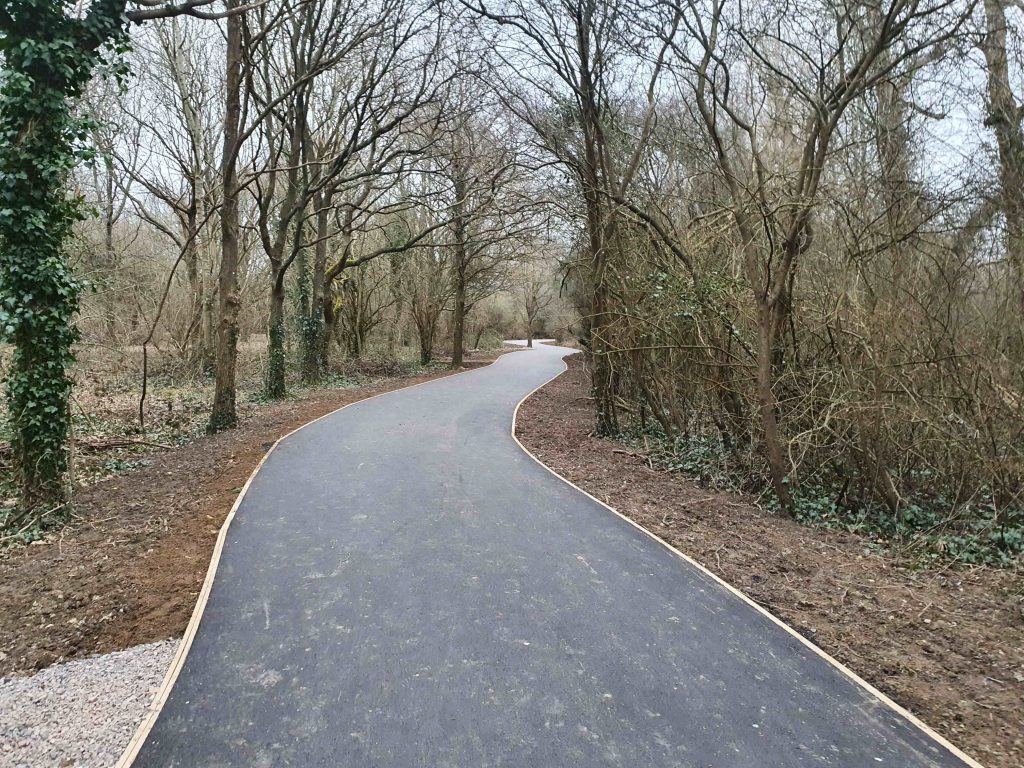
The paved pathways at West Park Nature Reserve are now open for use, albeit without markings to separate pedestrians from cyclists which have still to be added, but it represents a welcome all weather route between Malthouse Lane and the Rugby Club (particularly remembering the last time I walked the route and came away with soaked ankles!) . Walking locally has taken on a new context in the last year, and whilst covering any of our woodlands with tarmac should never be taken lightly, the level of use of these routes demands it, particularly as it confines users to the path as opposed to any ever widening muddy trail that it replaces. The improvements are part of the Place and Connectivity Programme putting in a number of new pathways or enhancements around the town, not least the new pathway from St Wilfrids Road to Wivelsfield Station where work started this week.
Branch Action!
We are all spending more time walking locally, often on pavements when the weather is bad, that often highlights overhanging branches or other obstructions that can make navigating our pavements more difficult. We can all be good neighbours in taking responsibility for the area around our house even if it is just ensuring it is free from any discarded rubbish. I took action to lop off these overhanging branches on Maple Drive to make this pavement safer for taller users (after asking permission from the relevant householder).
Theobalds Road bridle path
Walked down Theobalds Road along the bridle path to Fox Hill Village, its current state shows why Mid Sussex District Council did a U-turn on its proposals to turn it into a paved cycle path given the cost of ensuring proper drainage! However anyone who walks it regularly would have been able to tell them, as well as questioning the environmental effects of such a proposal. Their would be a significant financial and environmental cost to improving, particularly for the section by the stream (further complicated because it is in Lewes District which would not contribute to the cost).

